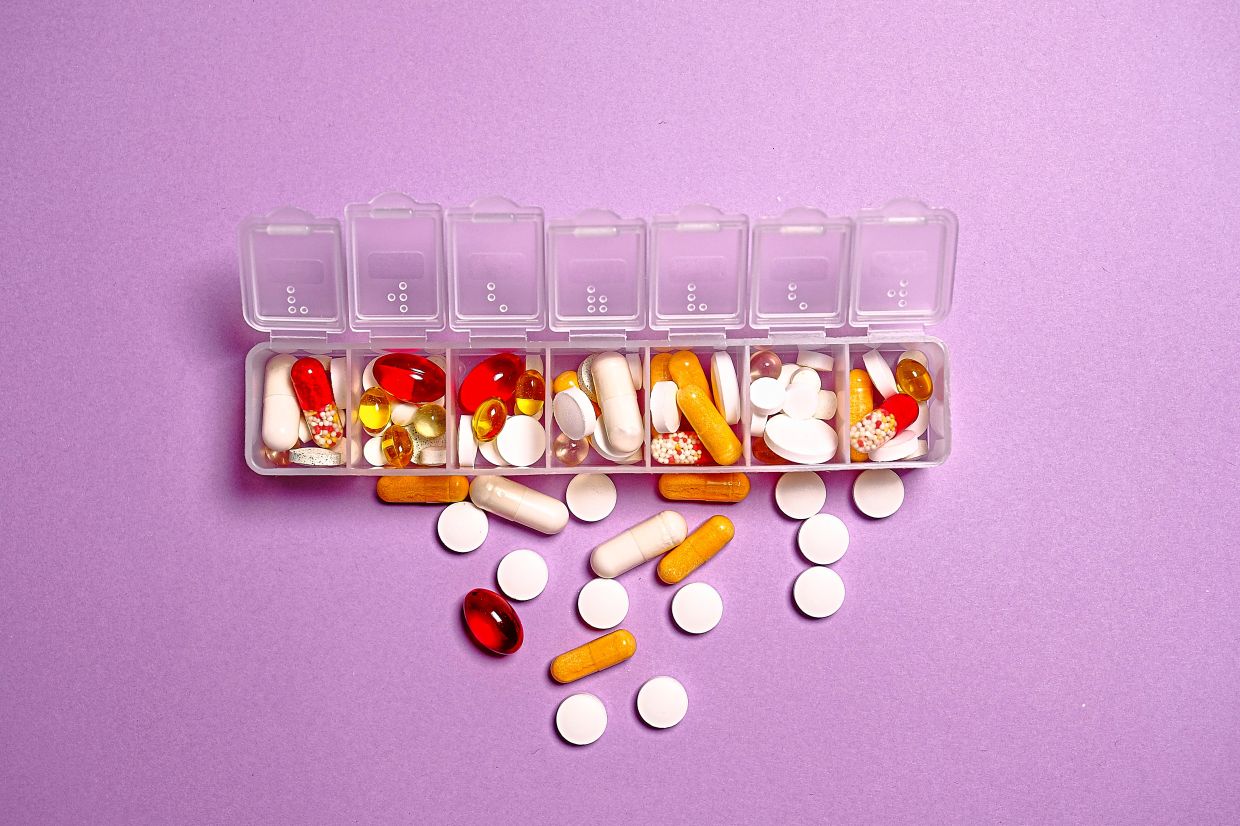Daily recommended nutrient intake can also be achieved through foods. One medium potato with skin for example, contains 15% of the daily potassium requirement. — PIXABAY/Pexels
It can be confusing trying to understand what food nutrition labels mean, even when they refer to simple things such as the RDA (Recommended Daily Allowance) for nutrients. Most people would reasonably assume that the RDA refers to the average amount of a nutrient required daily by people to remain healthy. However, this is quite wrong.
The real RDA
The RDA calculation begins with establishing the Estimated Average Requirement (EAR) of the target nutrient on groups of people. The EAR is the daily dose which should meet the requirement of 50% of people (defined by sex and age groups) to remain healthy.
The RDA is then derived by calculating roughly two standard deviations from the EAR, which means the RDA should theoretically cover the nutrient requirement of around 97.5% of the population. In short, ingesting the RDA every day should mean only 2.5% of the population would statistically suffer a deficiency in the nutrient.
Reality is more complicated though. It is sometimes impossible to establish a verifiable RDA level, so in such cases, the RDA is commonly set to EAR x 1.2, if an EAR can be established. Some nutrients have very minor effects on health, or deficiencies may take many years to manifest, or perhaps it is unethical to try to establish RDAs (eg, nutrients for human infants).
In such cases, past scientific literature is reviewed to set AI (Adequate Intake) levels for nutrients. As such, an AI level might be only an educated guess and may not even be shown on nutrition labels as it may be misleading. This is why there are normally never any RDAs (or AIs) listed for the nutrients in infant milk formulas.
Upper level
In addition to the RDA, there is another important measure which is much less known, probably because fewer people would normally be affected but it is becoming an increasingly problematic issue in this age of fortified foods and supplements. This more obscure measure is the Tolerable Upper Intake Level (UL), and is defined as the threshold level after which daily nutrients may cause “adverse effects”.
The term “adverse effects” has a specific meaning in this case and is defined as “any significant alteration in the structure or function of the human organism (or any impairment of a physiologically important function that could lead to a health effect that is adverse, in accordance with the definition set by various global health organisations.”
Furthermore, it is very important to consider that the excess intake of one nutrient may alter in detrimental ways the health benefits conferred by other nutrients. Such reactions are defined as “adverse nutrient-nutrient interactions” and are also considered health adverse effects.
Establishing ULs is more difficult than EARs as different people have widely diverse reactions to potential overdoses of nutrients, so ULs are usually established at levels where ANY negative responses may be detected. Statistically speaking, ULs are therefore often set at the point early in the distribution where only a few people begin to develop negative reactions to nutrient overdoses.
This is quite different from RDAs which are set nearer the tail end of the distribution where the vast majority do not get nutrient deficiencies. However, establishing the impact of adverse nutrient-nutrient interactions is often complicated due to the varieties and types of interactions.
Although probably safe for many people, this does suggest people should not persistently exceed daily ULs. Remember that ULs define the point where people start to experience adverse effects due to overdosage and perhaps also due to adverse nutrient-nutrient interactions. Below the UL thresholds, there are normally no issues with the nutrients. So, it would probably be an unnecessary risk to regularly exceed ULs without good medical advice.
As information about ULs is usually less available, here are some common nutrients and their ULs:
• Vitamin A: 3,000 micrograms (mcg) for adults
• Vitamin C: 2,000 milligrams (mg) for adults
• Vitamin D: 4,000 IU for adults
• Vitamin E: 1,500 milligrams (mg) for adults
• Calcium: 2,500 milligrams (mg) for adults
• Iron: 45 milligrams (mg) for adult men and 40 milligrams (mg) for adult women
• Magnesium: 350 milligrams (mg) for adults
• Phosphorus: 4,000 milligrams (mg) for adults
• Potassium: 4,700 milligrams (mg) for adults
• Sodium: 2,300 milligrams (mg) for adults
• Zinc: 40 milligrams (mg) for adult men and 30 milligrams (mg) for adult women
Anecdotal story
The above is all science-based and easily verifiable. But from this point, the story becomes anecdotal and personal. It is based on a conversation with a good friend and how I may have avoided Covid-19 last year. Hence, please do not take the following as medical or any kind of advice.
My friend is a person acutely aware of health issues and was lamenting that there are no vaccines targeted against the latest Pirola variant of Covid-19. This new highly mutated variant is driving up hospitalisation rates around the world significantly, over 25% higher in the USA alone this week, and it looks certain to spread to Europe and elsewhere.
Since the likelihood of new targeted vaccines is low, especially as the coronavirus is mutating so rapidly and heavily, the only suggestion offered was to take more Vitamin D. And the reason is that my wife caught Covid-19 last year and I was with her all the time, even after she tested positive. Another person in the same building also caught the virus, but even though I was always the closest person to her, the virus eluded me.
This may be because of some research done earlier for this column article three years ago, in my column titled ‘Presidential Nutrients’.
Since I always follow the science, and the research was very interesting, I began taking some Vitamin D daily after writing the column, though I did not bother with the zinc as my diet always contains enough zinc (I now always carry some spare zinc tablets whenever travelling, just in case).
The issue was establishing a correct level of Vitamin D to take, and several studies have suggested that an activated immune response would require dosages of 2,000 IU a day. As this was well below the UL for the vitamin, 2,000 IU is what I take every day along with some butter as Vitamin D is only soluble in fat and would not be digestible without also consuming some fats/oils with it. Note that older humans produce less Vitamin D from exposure to sunlight and taking it via drops is much cheaper and easier than tablets. A balanced diet is helpful too.
The normal RDA for many nutrients is fine for a healthy person, but people fighting off infections usually need much more nutrition than the RDA. So, taking more than the RDA should be fine as long as it is also below the UL.
Happily, it appears I have been able to avoid the virus since, and my health may have also improved a little, but that is just a subjective assessment based on fewer incidences of sinusitis and colds. My wife had refused to take Vitamin D before she caught Covid-19 but now takes it every day because she does not want to catch it again.
The main issue is Vitamin D supplementation is not wholly confirmed scientifically as a beneficial course of action against Covid-19. Several papers suggested tangible benefits while others have not been able to find any prophylactic properties. The best paper might be a small, randomised trial in Mexico City started on 321 frontline health workers at the peak of the pandemic, of which 192 finished the study. The Covid-19 infection rate of those supplemented with Vitamin D was 6.4% vs 24.5% without supplementation.
Another USA study around the same time based on several hundred army veterans found that Vitamin D supplementation reduced Covid-19 infections by up to 28% and additionally reduced deaths within 30 days of infected veterans by up to 33%.
Against the above, a trial involving 6,200 adults in the UK found no links to any protection against Covid-19 due to Vitamin D supplementation, although the study itself admitted that the “interpretation of this result is complicated by the pragmatic nature of this trial”, whatever this means, as the paper is difficult to read.
The methodology was also odd as it involved testing people in advance to establish low levels of Vitamin D before mailing out doses of either 800 IU or 3,200 IU only to people with detected deficiency of the vitamin. There appears to be no monitoring to validate if people actually took the supplements.
None of the large pharmaceutical companies have indicated any interest in investigating the properties of Vitamin D against Covid-19, so much of the research available is done in-house at busy hospitals not usually dedicated to research. Despite this, a meta-analysis of 38 studies with better-quality data covering 205,565 subjects during the peak of the pandemic indicated that people with low levels of Vitamin D had roughly double the risk of catching Covid-19.
Patients infected with Covid-19 also had a 73% reduced risk of mortality from the disease if supplemented with Vitamin D. However, there are also flaws in this meta-analysis due to the significantly different approaches taken by the various studies.
Therefore, it is not possible to suggest with any certainty that Vitamin D supplementation will help against Covid-19 or indeed any other diseases. That is also what I told my friend, but I think he went out to buy some Vitamin D drops anyway.
The views expressed here are entirely the writer’s own.







